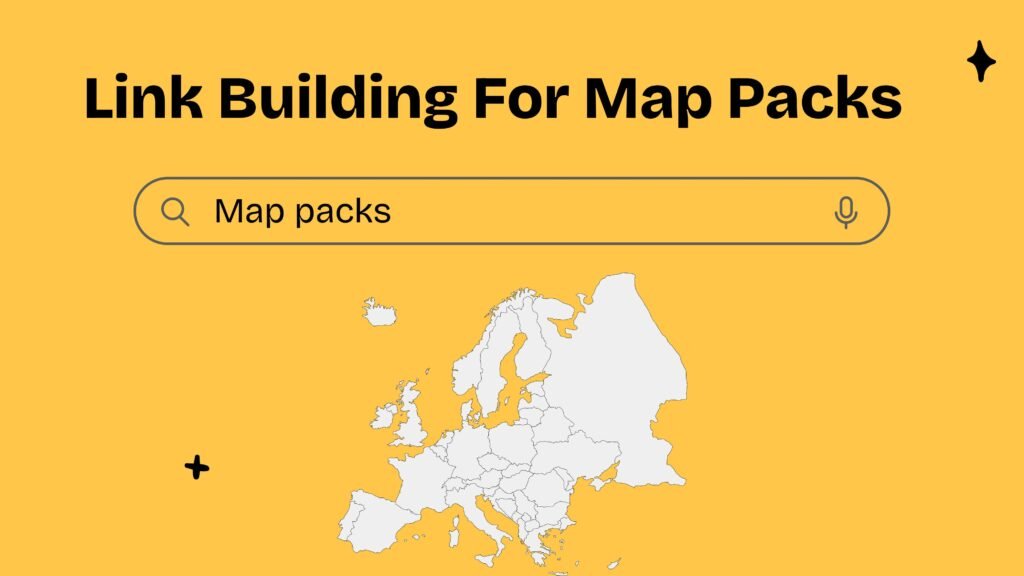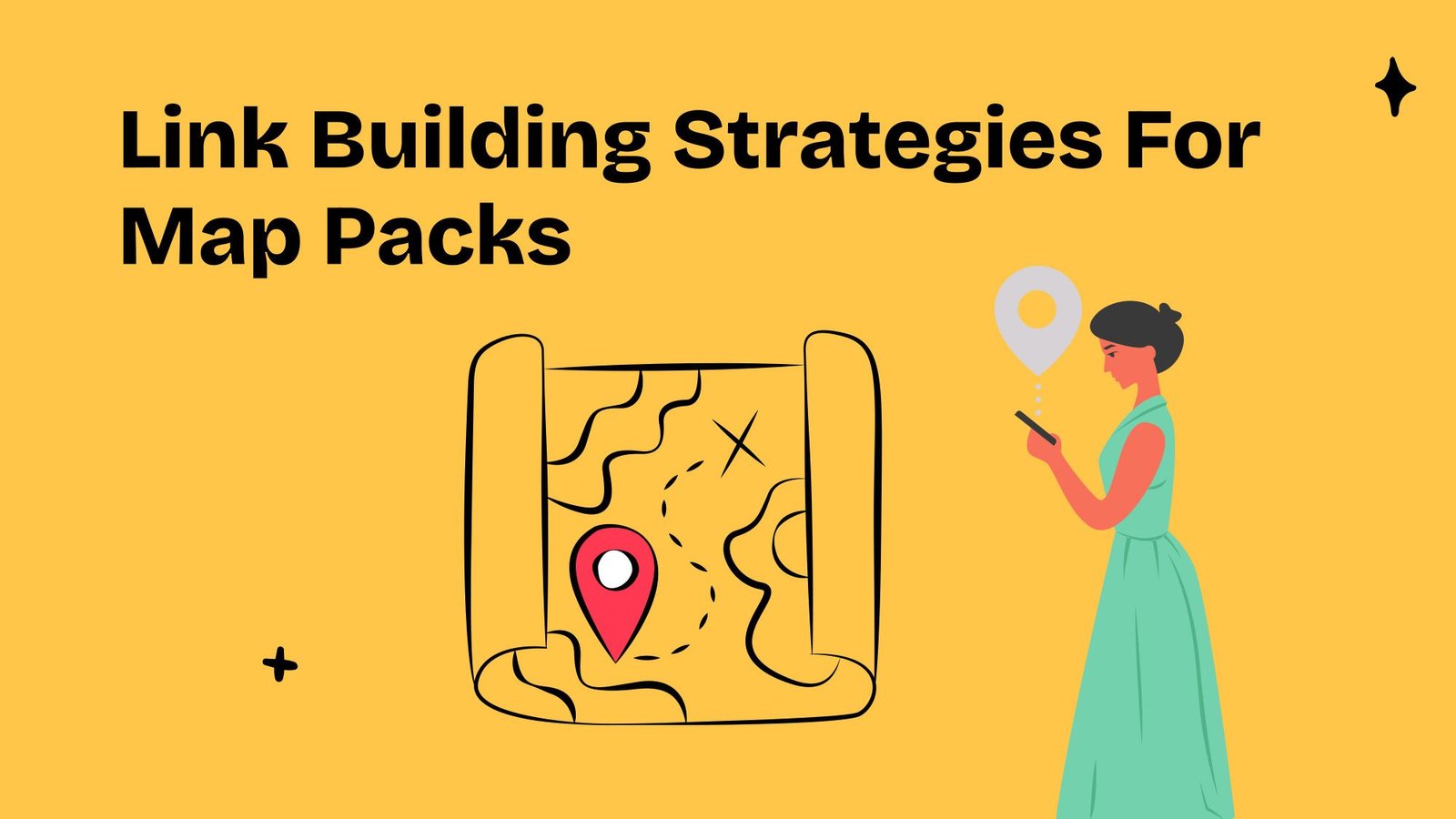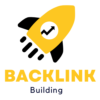
Link building is a cornerstone of search engine optimization (SEO), and its significance extends beyond traditional organic search results. In the realm of local SEO, link building plays a pivotal role in enhancing visibility within the Google Map Pack, a crucial component for businesses aiming to capture local clientele. The Map Pack, also known as the Local Pack, is the prominent listing of local businesses that appears at the top of Google search results when users search for services or products in their vicinity. Securing a spot in this coveted section can significantly boost a business’s online presence, drive foot traffic, and increase sales.
In this article, we delve into the intricacies of link building specifically tailored for the Map Pack. We explore how local businesses can leverage strategic link building to improve their rankings and visibility in local search results. Understanding the nuances of local link building is essential, as it differs from traditional link building strategies. Local link building focuses on acquiring links from local sources, such as local news websites, community blogs, and local business directories, which can enhance a business’s relevance and authority in a specific geographic area.
Moreover, we will discuss the importance of citations and how they complement link building efforts. Citations, which are mentions of a business’s name, address, and phone number (NAP) on other websites, are crucial for local SEO. They help search engines verify the legitimacy and location of a business, further boosting its chances of appearing in the Map Pack.
Throughout this article, we will provide actionable insights and practical tips for businesses looking to enhance their local SEO through effective link building. From identifying potential local link opportunities to crafting compelling outreach strategies, we cover all aspects necessary to build a robust local link profile. Whether you’re a small business owner or a digital marketing professional, understanding and implementing these strategies can be a game-changer in your quest to dominate the local search landscape.
Why is Link Building For Map Pack Important?
Understanding the Role of Link Building in Local SEO
Link building is a crucial aspect of local SEO strategies, especially when aiming to improve your visibility in the Google Map Pack. The Map Pack, also known as the local pack, displays the top three local businesses related to a user’s search query. Securing a prominent position in this pack can significantly increase your business’s visibility, foot traffic, and revenue.
How Link Building Enhances Map Pack Rankings
Links act as votes of confidence from other websites, signaling to search engines that your business is trustworthy and relevant. When your website earns high-quality backlinks, it boosts your authority in the eyes of Google, which can directly influence your local search rankings. This increased authority helps your business appear higher in the Map Pack results.
Key Benefits of Effective Link Building for Map Pack Visibility
•Increased Local Authority: High-quality backlinks improve your website’s domain authority, making it more competitive in local searches.
• Enhanced Credibility: Backlinks from reputable local sources reinforce your business’s credibility and trustworthiness.
• Higher Click-Through Rates: Better rankings in the Map Pack lead to more visibility and higher chances of potential customers clicking on your listing.
• Improved Organic and Local Search Performance: Link building benefits both organic rankings and local pack visibility simultaneously.
Why Google Values Backlinks for Local Search
Google’s algorithms prioritize relevance and authority when determining local search results. Backlinks from local directories, industry-specific sites, and community organizations serve as strong indicators of your business’s relevance within the local ecosystem. These links help Google understand your business’s local significance, which is essential for ranking in the Map Pack.
Types of Links That Impact Map Pack Rankings
• Local Business Directories: Listings on platforms like Yelp, Bing Places, and Google My Business are vital for local SEO.
• Industry-Specific Websites: Backlinks from niche industry sites or associations boost your authority.
• Community and Local News Sites: Coverage or mentions in local news outlets can generate valuable backlinks.
• Partnerships and Sponsorships: Collaborations with local organizations often lead to backlinks and increased visibility.
Strategies for Building Effective Links for Map Pack Optimization
Implementing a strategic approach to link building can significantly improve your chances of ranking in the Map Pack. Here are some effective strategies:
• Claim and Optimize Your Google My Business Profile: Ensure your profile is complete, accurate, and includes backlinks to your website.
• Engage with Local Directories: Submit your business to reputable local directories and ensure consistent NAP (Name, Address, Phone Number) information.
• Create Local Content: Develop blog posts, guides, or news about local events that naturally attract backlinks.
• Build Relationships with Local Influencers: Collaborate with local bloggers, journalists, and influencers to earn backlinks and mentions.
• Participate in Community Events: Sponsoring or hosting local events can lead to media coverage and backlinks from local news outlets.
Monitoring and Maintaining Your Link Profile
Consistent monitoring of your backlinks is essential to maintain and improve your Map Pack rankings. Use tools like Ahrefs, SEMrush, or Moz to track your backlinks, disavow spammy links, and identify new opportunities for link acquisition.
In summary, link building plays a vital role in securing and maintaining a prominent position in the Map Pack. By earning high-quality, relevant backlinks from local sources, your business can enhance its authority, credibility, and visibility in local search results. A well-executed link building strategy, combined with other local SEO practices, can lead to sustained growth and increased customer engagement in your area.
Top Strategies For Link Building For Map Pack
 Achieving a prominent position in the local map pack can significantly boost your business visibility and attract more customers. One of the most effective ways to enhance your local SEO is through strategic link building tailored specifically for the Map Pack. In this section, we’ll explore proven strategies that help you earn high-quality backlinks, improve authority, and ultimately dominate local search results.
Achieving a prominent position in the local map pack can significantly boost your business visibility and attract more customers. One of the most effective ways to enhance your local SEO is through strategic link building tailored specifically for the Map Pack. In this section, we’ll explore proven strategies that help you earn high-quality backlinks, improve authority, and ultimately dominate local search results.
1. Focus on Local Citations with Authority Websites
Local citations are mentions of your business name, address, and phone number (NAP) across various online platforms. Securing backlinks from reputable citation sources not only boosts credibility but also signals relevance to search engines.
• Niche-specific directories: Submit your site to industry-related directories relevant to your niche or location.
• Mainstream listing sites: Ensure consistent NAP details on Google My Business, Yelp, Bing Places, Facebook Pages etc.
• Citation audits: Regularly review existing citations for accuracy; correct inconsistencies that could harm rankings.
2. Leverage Local Partnerships & Sponsorships
Your community connections can be powerful when nurtured correctly. Partnering with local businesses or sponsoring events not only builds goodwill but also creates valuable backlink opportunities while strengthening community ties.
Sponsor charity events or local sports teams: These often result in backlinks from event pages, sponsor listings, or local media coverage.
Collaborate with nearby businesses: Exchange guest blog posts, co-host webinars, or run joint promotions that link back to each other’s websites.
Join your local Chamber of Commerce: Many chambers list member businesses on their website with direct backlinks, often with high domain authority.
3. Create Locally Relevant Content That Attracts Links
Compelling, locally-focused content can naturally attract backlinks from local bloggers, businesses, and media outlets.
Create local guides: Write comprehensive city or neighborhood guides, such as “Best Restaurants in [City]” or “Top Weekend Activities in [Area].” These are often shared and linked by other local websites.
Share customer success stories: Highlight positive experiences involving clients from specific areas. Local news sites and community blogs often pick up such stories.
Publish industry insights tied to your location: Become an authoritative source for regional trends or data in your niche, and gain links from industry peers and local publications.
4. Build Relationships With Influencers and Local Bloggers
• Building genuine connections with influencers, bloggers, journalists, and local social media figures can organically lead to backlinks.
• Offer exclusive experiences like product samples, service demos, or special discounts in exchange for honest reviews or mentions.
• Actively engage with them by sharing their content, leaving thoughtful comments, or collaborating on content.
• Personalize outreach messages to show that you value the relationship—not just the backlink.
~ Focus on long-term relationships rather than one-time link exchanges.
5. Use Testimonials and Case Studies to Earn Backlinks
• Providing testimonials and developing case studies can lead to backlinks from partner or client websites.
• Reach out to satisfied clients and ask if they’d be willing to publish a testimonial on their website with a link back to your business.
• Create detailed case studies about successful projects. Clients often include these in their PR materials, portfolio pages, or blog posts with a backlink.
6. Utilize Broken Link Building Tactics
• Broken link building is a smart, often overlooked strategy that involves finding and replacing dead links with your own relevant content.
• Use tools like Ahrefs, SEMrush, or BrokenLinkChecker to identify broken links on local websites, blogs, or directories.
• Contact the webmasters to inform them of the broken link and suggest your content as a suitable replacement.
• Keep your outreach friendly and focused on helping them improve their site.
7. Monitor Competitors’ Backlink Profiles
• Studying your competitors’ backlink strategies can uncover link opportunities that are already proven to work in your niche.
• Use SEO tools like Ahrefs, Moz, or SEMrush to identify high-quality backlinks pointing to your competitors.
• Look for patterns—where they’re guest posting, getting featured, or earning mentions.
• Reach out to those same sources with better content or value propositions to earn backlinks for your own site.-
By thoughtfully implementing these diverse yet interconnected local SEO strategies, you’ll boost your domain authority, improve relevance, and increase visibility in the local map pack. This leads to more clicks, calls, and conversions for the businesses you serve.
Measuring & Analyzing Link Building for Map Pack Success
Effective link building is crucial for improving your local business’s visibility in the Google Map Pack. But to ensure your efforts are actually paying off, it’s essential to measure and analyze your strategies accurately. This section explores key metrics, tools, and techniques to track progress and optimize your future campaigns.
Key Metrics to Track in Link-Building Campaigns
Tracking the right metrics helps determine whether your link-building activities are contributing to higher Map Pack rankings. Here’s what to focus on:
Local Citation Authority: The number of consistent, high-quality citations of your business across trusted directories impacts your local search visibility.
Backlink Quantity & Quality: Measure both the number of backlinks and their domain authority. A few high-quality links are more valuable than dozens of low-quality ones.
Dofollow vs. Nofollow Links: Prioritize acquiring dofollow links, as these pass SEO value and directly influence ranking.
Anchor Text Relevance: Ensure that anchor texts closely relate to the targeted keywords for Map Pack optimization.
User Engagement Metrics: Monitor metrics like click-through rate (CTR), bounce rate, and time-on-site. These indicate how relevant your content is once users arrive from search or Maps.
Tools to Monitor Link-Building Progress
Using the right tools simplifies the process of tracking link performance and SERP changes:
SERP Analysis Tools: Use SEMrush or Ahrefs to track Local Pack rankings and see how your business performs for target queries.
Google Search Console: Track impressions, CTR, and average position for location-based keywords.
Link Profile Auditors: Tools like Moz Pro or Majestic help you audit and assess the quality, quantity, and diversity of your backlink profile.
Local Rank Trackers: Platforms like BrightLocal and Whitespark allow precise tracking of local keyword movements within Google Maps and Local Pack results.
Measuring Link-Building Impact on Map Pack Rankings
To accurately assess how link building influences your local rankings:
1. Establish a Baseline: Record your current positions for target local keywords before beginning any campaign.
2. Track Backlink Acquisition: Monitor new links gained, their sources, anchor text, and domain authority regularly.
3. Monitor Ranking Fluctuations: After gaining high-authority backlinks or citations, observe any ranking improvements.
4. Correlate With Local Traffic Spikes: If you see an increase in local search traffic that aligns with new link acquisitions, it’s a strong signal your strategy is working.
When these movements align—improved backlink profile, citation mentions, and local keyword positions—you can confidently attribute success to your link-building efforts.
Challenges in Measuring Results
Tracking results isn’t always straightforward. You may face several challenges:
Google Algorithm Variability: Monthly algorithm updates can influence Map Pack rankings independently of your link efforts.
Attribution Complexity: It’s difficult to isolate the impact of individual links since rankings are affected by many overlapping factors.
Delayed Effects: There is often a time lag between gaining new links and seeing measurable ranking improvements.
Overcoming these challenges requires patience, consistent monitoring, and data-driven adjustments based on long-term trends rather than short-term fluctuations.
By systematically measuring key performance indicators, using reliable SEO tools, and understanding the external factors that affect rankings, you can continuously refine your link-building strategy. This leads to sustained visibility, higher credibility, and stronger performance in the Google Map Pack, ultimately driving more traffic and conversions for your local business.
Common Mistakes to Avoid While Link Building for Map Pack
Link building for the local Google Map Pack can significantly improve your business’s visibility in local search results. However, many marketers and local SEO practitioners fall into common pitfalls that can hinder success—or worse, harm rankings. Understanding these mistakes is essential for developing an effective, sustainable link-building strategy that drives real results.
1. Ignoring Relevance and Local Context
One of the most common errors is acquiring backlinks from websites that are either irrelevant to your industry or disconnected from your geographic location.
Noisy backlink profiles: Links from unrelated websites dilute your topical authority.
Lack of local focus: Backlinks from domains outside your region or city contribute little to your local SEO efforts.
🔑 Tip: Focus on local news outlets, community blogs, and industry-specific websites within your geographic region.
2. Relying Solely on Low-Quality Backlinks
While it may be tempting to build links quickly via spammy directories or PBNs, this approach is risky and often counterproductive.
Poor-quality links: These can lead to penalties by algorithms like Google Penguin.
Quantity over quality: A few strong, relevant backlinks from authoritative sources outperform dozens of weak, irrelevant ones.
🔑 Tip: Always evaluate domain authority and relevance before pursuing a backlink.
3. Neglecting Niche-Specific Directories and Citations
Skipping trusted directories that are specific to your industry is a missed opportunity. These platforms are often trusted by both users and search engines.
Mistake: Overlooking platforms like Yelp (restaurants), Avvo (legal services), or Healthgrades (healthcare).
Impact: Reduces the number of authoritative citation signals that help reinforce your local presence.
🔑 Tip: Claim and optimize your profiles on every niche-relevant directory possible.
4. Overlooking Anchor Text Optimization
Anchor text plays a critical role in contextual relevance. Overuse of exact-match keywords or too many generic anchors can both be harmful.
Keyword stuffing: Repetitive, exact-match phrases appear manipulative to search engines.
Generic anchors: Using terms like “click here” wastes the opportunity to enhance contextual signals.
🔑 Tip: Use natural variations that include brand names, geo-modifiers, and relevant service descriptions.
5. Forgetting Ongoing Listing & Engagement Optimization
Creating local listings once and leaving them unmaintained is a major oversight. Engagement metrics like reviews and social interactions also contribute to Map Pack visibility.
Lack of fresh engagement: Google favors businesses that maintain active local presence signals.
Missed social proof: Positive reviews, shares, and interactions build credibility and visibility.
🔑 Tip: Encourage satisfied customers to leave reviews and share your content across social platforms.
Frequently Asked Questions (FAQs)
What is the role of backlinks in improving my Map Pack rankings?
Backlinks act as endorsements for your business. High-quality, relevant links signal to Google that your site is trustworthy and authoritative, boosting your visibility in the Map Pack—especially when combined with optimized listings and strong local citations.
How can I build effective links specifically for Local Map Pack optimization?
Focus on:
Acquiring citations from reputable local directories.
Earning links from niche-specific websites and community blogs.
Engaging in local sponsorships and partnerships.
Publishing high-quality, locally focused content that others will want to reference.
Are there any risks associated with aggressive link building for Map Pack?
Yes. Overusing manipulative tactics—like spammy directories, paid backlinks, or private blog networks—can lead to Google penalties. These not only affect your Map Pack ranking but may also damage your organic SEO performance.
If I already have good reviews but poor backlinks, will building more links help?
Absolutely. While reviews are powerful for click-through rates and trust, strong backlinks help increase your domain authority and relevance. The combination of both is ideal for climbing Map Pack rankings.
How long does it take for new backlinks to affect my Map Pack rankings?
It typically takes 4–8 weeks to see tangible results, though this varies based on your domain’s authority, local competition, and the quality of your backlinks. Consistency and ongoing optimization are key.
